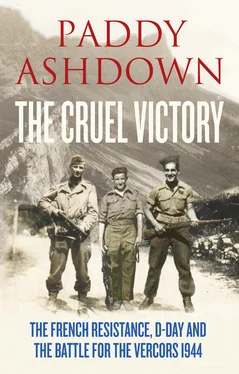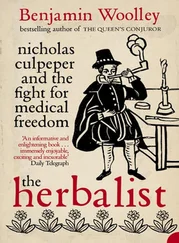
William Collins
An imprint of HarperCollins Publishers,
77–85 Fulham Palace Road,
London W6 8JB
WilliamCollinsBooks.com
First published in Great Britain by William Collins in 2014
Copyright © Paddy Ashdown 2014
Maps by Harriet McDougall
Paddy Ashdown asserts his moral right to
be identified as the author of this work
A catalogue record for this book is
available from the British Library
All rights reserved under International and Pan-American Copyright Conventions. By payment of the required fees, you have been granted the non-exclusive, non-transferable right to access and read the text of this e-book on screen. No part of this text may be reproduced, transmitted, downloaded, decompiled, reverse engineered, or stored in or introduced into any information storage retrieval system, in any form or by any means, whether electronic or mechanical, now known or hereinafter invented, without the express written permission of HarperCollins e-books.
Cover photographs © Musée départmental de la Résistance du Vercors, Vassieux-en-Vercors
Maps by Harriet McDougall
Source ISBN: 9780007520800
Ebook Edition © June 2014 ISBN: 9780007520824
Version: 2014-11-28
To the boy in the white shirt
In war, young men go out to die for old men’s dreams
Anon
Cover
Title Page
Copyright
Dedication
Epigraph
A Note on Usages
Preface
Dramatis Personae
List of Maps
Prologue
1 The Vercors before the Vercors
2 France from the Fall to 1943: Setting the Scene
3 Beginnings
4 The Army Goes Underground
5 Camps and Plans
6 Exodus and Folly
7 Expectation, Nomadisation and Decapitation
8 Retreat, Retrenchment and Reconstruction
9 Pressure and Parachutes
10 The Labours of Hercules
11 January 1944
12 Of Germans and Spies
13 February 1944
14 March 1944
15 Weapons, Wirelesses, Air Drops and Codes
16 April 1944
17 A Basket of Crabs
18 May 1944
19 The First Five Days of June 1944
20 D-Day: 6 June 1944
21 Mobilization
22 The First Battle of Saint-Nizier
23 The Second Battle of Saint-Nizier
24 Respite and Reorganization
25 A Damned Good Show
26 Mixed Messages
27 The Republic
28 Action and Expectation
29 Bastille Day: 14 July 1944
30 Pflaum’s Plans and People
31 The Rising Storm
32 The End of Dreams: Friday 21 July 1944
33 Fighting On: Saturday 22 July 1944
34 The Final Battles: Sunday 23 July 1944
35 Retreat and Refuge
36 The Harrowing of the Vercors
37 Resurgence and Revenge
38 Aftermath and Afterlives
39 Postscript
Annex A
Annex B
Annex C
Acknowledgements
Notes
List of Illustrations
Bibliography
Picture Section
Index
Also by Paddy Ashdown
About the Author
About the Publisher
In this text I have not included dialogue unless it comes from a source who I have reason to believe might have been present at the time or it has been noted down as dialogue in the course of taking testimony from a living witness.
Since this story concerns primarily military operations, I have used the twenty-four-hour clock throughout. In 1943 and 1944 all British forces in the European theatre used Greenwich Mean Time (GMT) plus one hour (UK Single Summer Time) from 16 August to 3 April, and GMT plus two hours from 4 April to 15 August (UK Double Summer Time). The time used in all German-occupied western European territories was Central European Time (CET), which in that era was UK Single Summer Time plus two hours. Since this story takes place primarily in France, all times in the text are given in, or adjusted to be consistent with, CET.
For a similar reason, units of measurement have been converted, where appropriate, to the metric scale.
Readers may want to know what the wartime franc was worth. Prices more than doubled during the four years of the German occupation of France, and inflation was very much worse on the black market. But one can get a rough idea of money values if one thinks of 1,000 francs in 1943–4 as the equivalent of 250 euros or £200 today.
Except where otherwise stated the translations of French source documents into English are those of the author. Where the original French was in a written formal document I have tried to make the translation as precise as possible. Where the original source is oral (for example, the oral evidence of witnesses) I have allowed myself greater latitude to cope with the differences in sentence formation between spoken French and English in an attempt to preserve the original sense and colour, while conveying this to the English reader in the most readable fashion.
The word ‘maquis’ has subtly different meanings in English and French. The word originates from the Corsican term for the dry scrub which covers the hills of southern and Mediterranean France, but even more so from a Corsican expression prendre le maquis , which means to shelter in the woods to escape the authorities or a vendetta (to go underground). Even today, the word is used by the French primarily to describe those who resisted the Germans by going into the countryside and especially the wilder places. They formed into groups which sometimes took the name of the area they operated in – for instance, le maquis du Vercors . The term maquisard in French denotes someone who belonged to a maquis cell, usually in a rural area. In French the term is not normally taken to apply to those who belonged to urban Resistance groups (for example, in Paris or Lyon). In modern English usage, however, the word Maquisard has become, for all practical purposes, synonymous with that of a Resistant, whether urban or rural. Since this is an English book the word Maquis is used in the English sense, except where it is plainly inappropriate to do so.
One of the problems with writing this book has been the story’s high degree of complexity and detail. In an attempt not excessively to confuse the reader, I have tried to keep the personal names of those who played a minor role in the story out of the main text. For those interested, these, where known, are given in the Notes. Similarly, I have removed from the main text as many of the military unit names as possible; these too can be found in the Notes. And finally, in the same endeavour, I have submerged some of the myriad organizations involved in both London and Algiers. Thus the main directing French organization in London, the Bureau Central de Renseignements et d’Action (BCRA), is referred to simply as ‘London’ or ‘de Gaulle’s headquarters in London’, while the main Algiers organization for directing the Resistance in southern France, the Special Projects Operations Centre (SPOC), becomes just ‘Algiers’.
For the same reason and in the hope it will make them more accessible to the reader, I have tried to simplify the references by providing abbreviations for the main archives which I have consulted (such as TNA for the British National Archives at Kew, and NARA for the US National Archives and Records Administration). A key giving each of these abbreviations can be found at the start of the Notes section.
Читать дальше













